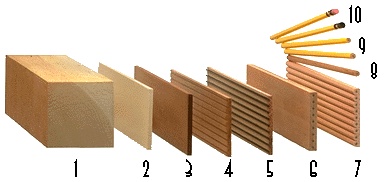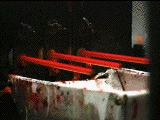In 1564, a gust of wind blew down a big tree near the Polo Valley in Cumberland, England, and a large amount of graphite was exposed at the roots and knots of the tree. The local shepherd discovered a use of graphite-to draw marks on sheep. Soon, discerning city people cut the graphite ore into thin strips and sold it in the London market. Shopkeepers and merchants used it to mark the goods, so it was called "printing stone." This "original pencil" draws thick, black and clear prints.
However, graphite is fragile. In 1761, the German chemist Faber collected some graphite ore from the Castasl coal mine, ground it into powder, washed it with water to remove impurities, and obtained pure graphite powder. After various experiments, Faber finally discovered that Graphite is mixed with sulfur, antimony and resin, heated and solidified, and pressed into "pencils". The hardness is suitable, the writing is smooth, and the hands are not easy to get dirty. After the pencil is wrapped in a paper roll, you can take it Sold at the store.
In 1789, the French Revolution broke out. Britain and Germany imposed a blockade on France. There was no source of pencils. The impact on France was not small. The French chemist and inventor Conte was ordered to collect graphite as much as possible to make pencils in France. However, the French graphite The quality is poor and the output is not much. Conte worked hard and finally got the idea. He mixed some clay in the graphite. The effect was unexpectedly good. This mixture became the best paintbrush in the world, in the graphite. Adding different properties of clay, you can get "hard lead" and "soft lead".
However, Conte’s pencil and Faber’s pencil have only one thin strip, which can easily break. In 1812, William Monroe, a carpenter and tinker in Massachusetts, USA, became a man of action. He was determined to add icing on the cake and put the pencil on the wooden "coat". Monroe installed a machine in the soil yard to manufacture standardized wooden strips with a length of 5-18 cm. In the middle of the thin wooden strips, a groove just suitable for the pencil lead was dug out with a machine, and then two thin wooden strips with the same grooves were placed between the two thin wooden strips. Insert a graphite strip and close it with glue. Thus, the first modern pencil was produced. This 18 cm long standard pencil can draw 55 kilometers of lines, at least 45,000 words can be written, and it has been sharpened 17 times and the pen tip is 5 cm long.
One hundred years after the birth of the Monroe pencil, some people thought it was a waste of wood. As a result, the Japanese Hayakawa Tokuji invented a pencil that can repeatedly push out the pencil lead in 1915. It is the prototype of the mechanical pencil that is widely used today. . The world of more than 300 pencils is now dazzling.
How are pencils made?

1. Cut the pine wood into pencil blocks.
2. Cut the pencil block into pencil boards.
3. Wax and color the pencil board.
4. Cut out the slot for placing the lead core on the pencil board.
5. Put the lead core made of graphite and clay into the trough.
6. Glue the second pencil board and the first pencil board with a lead core to form a sandwich.
7. Make the sandwich into a pencil shape.
8. Make the sandwich into individual pencils and arrange them evenly.
9. Paint each pencil. Install a metal hoop on one end of the pencil (for attaching the eraser to the pencil)
10. Put an eraser on each pencil and press it tightly.

Anecdote of pencils
A pencil can also write in the absence of gravity in space.
The United States consumes 2 billion pencils a year. Most of them are pencils with eraser tips.
Most of the pencils sold in Europe do not have an eraser tip.
A pencil can draw a line 35 miles long. A pencil can write 45,000 words.


Why is a pencil called a pencil without lead?
Author: Strongink Pen Kits
